The Control Side of Krav Maga
This article excerpt is from David Kahn’s seventh book, Krav Maga Defense Strategies, to be published in 2021 by YMAA Publishing.

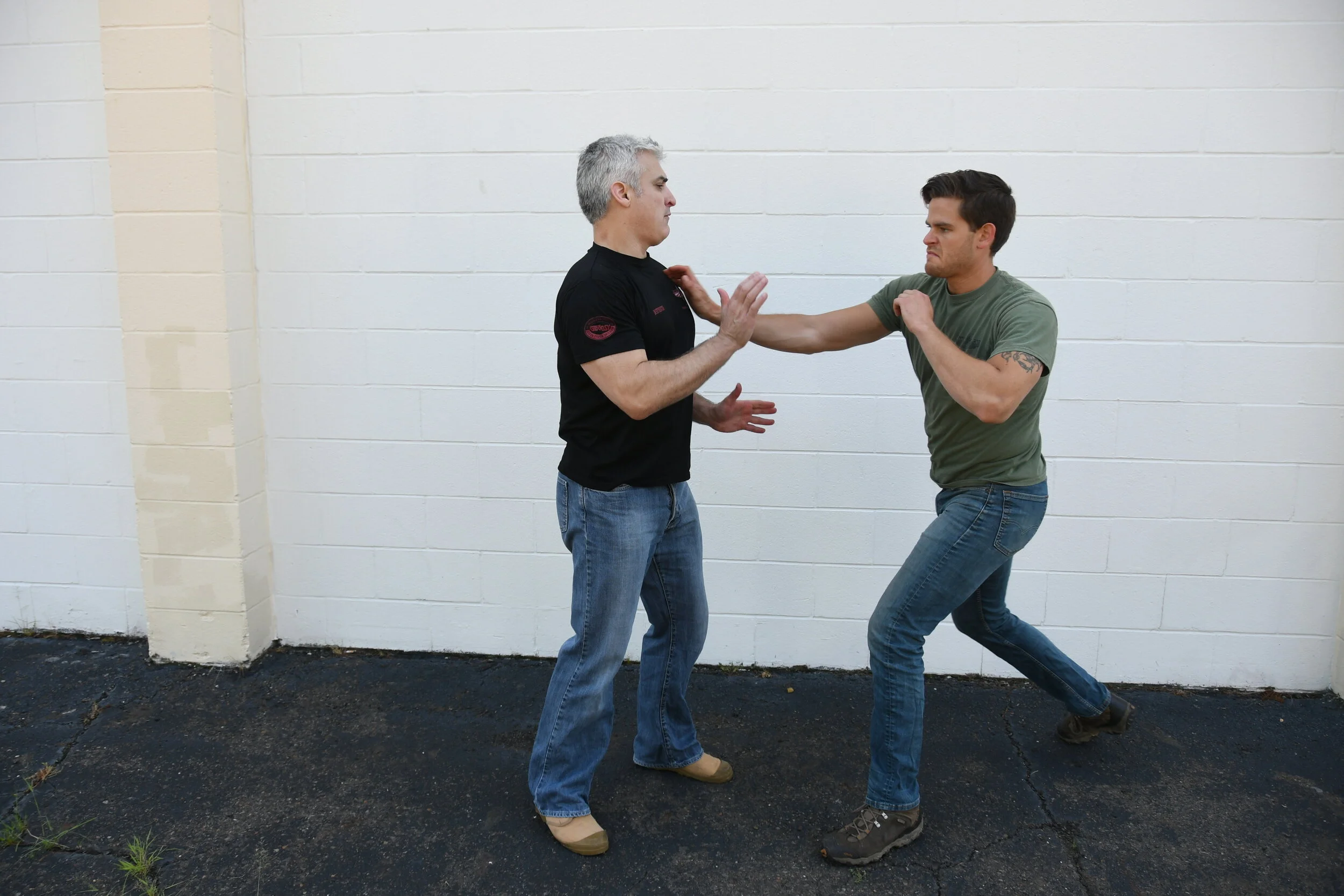
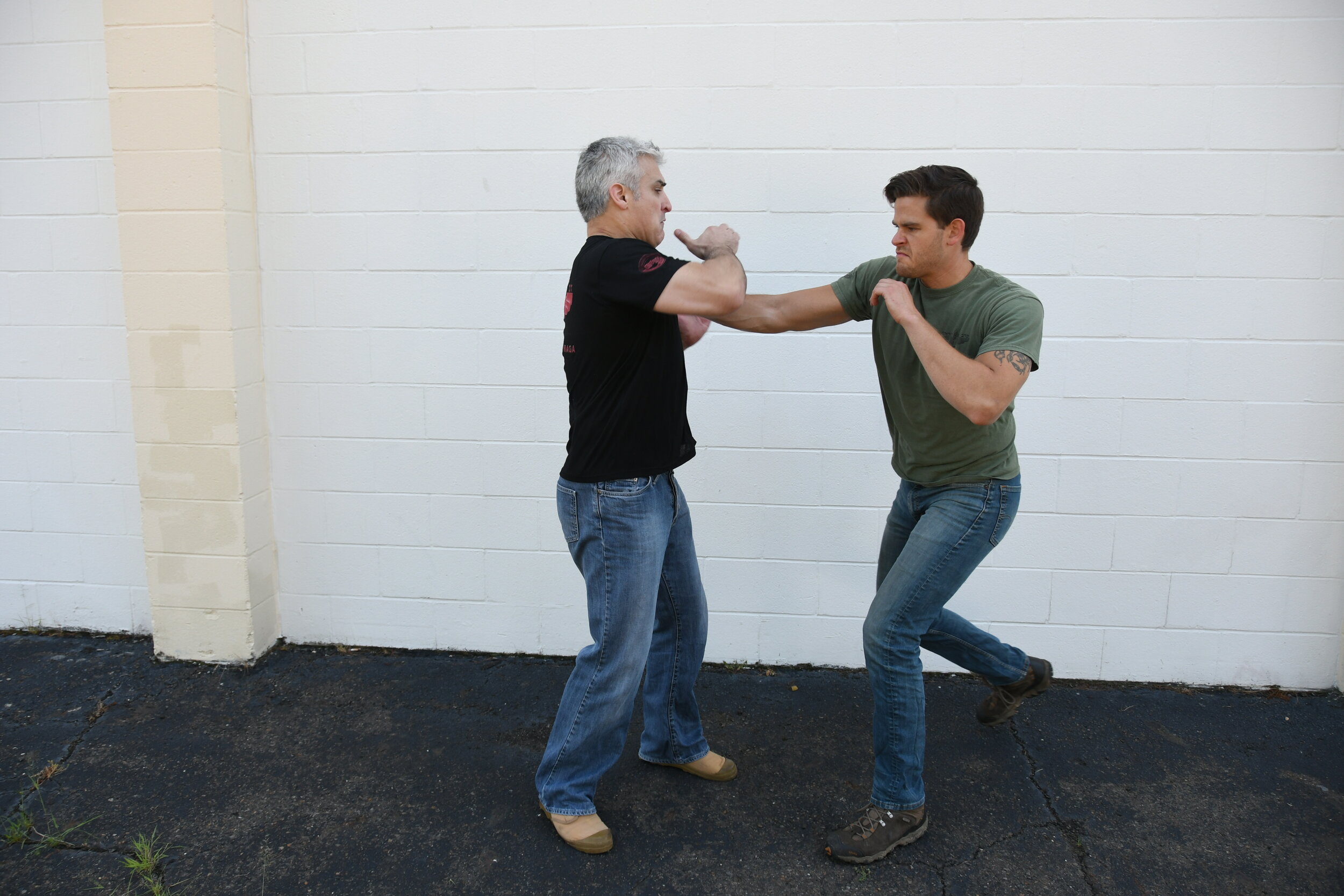
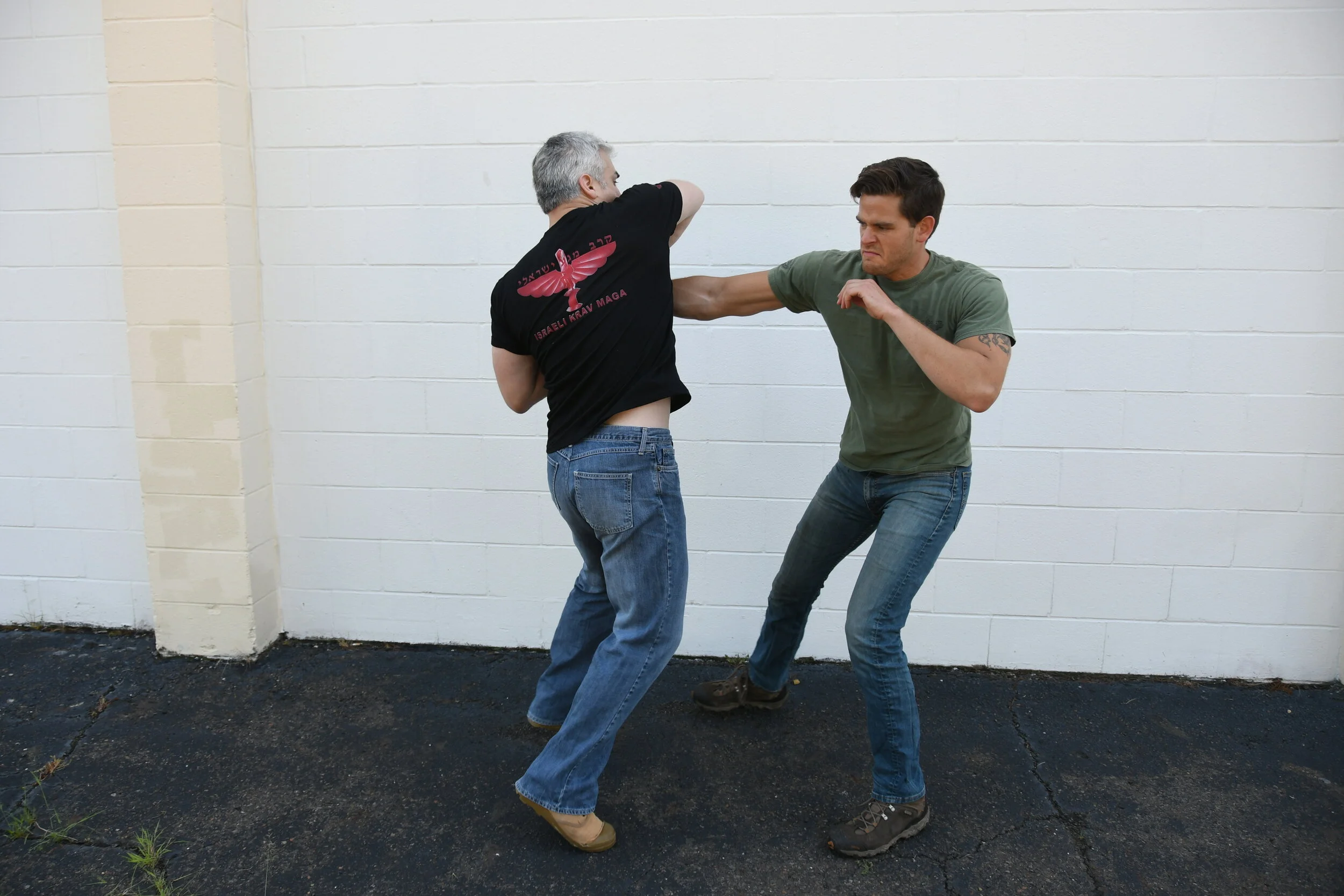

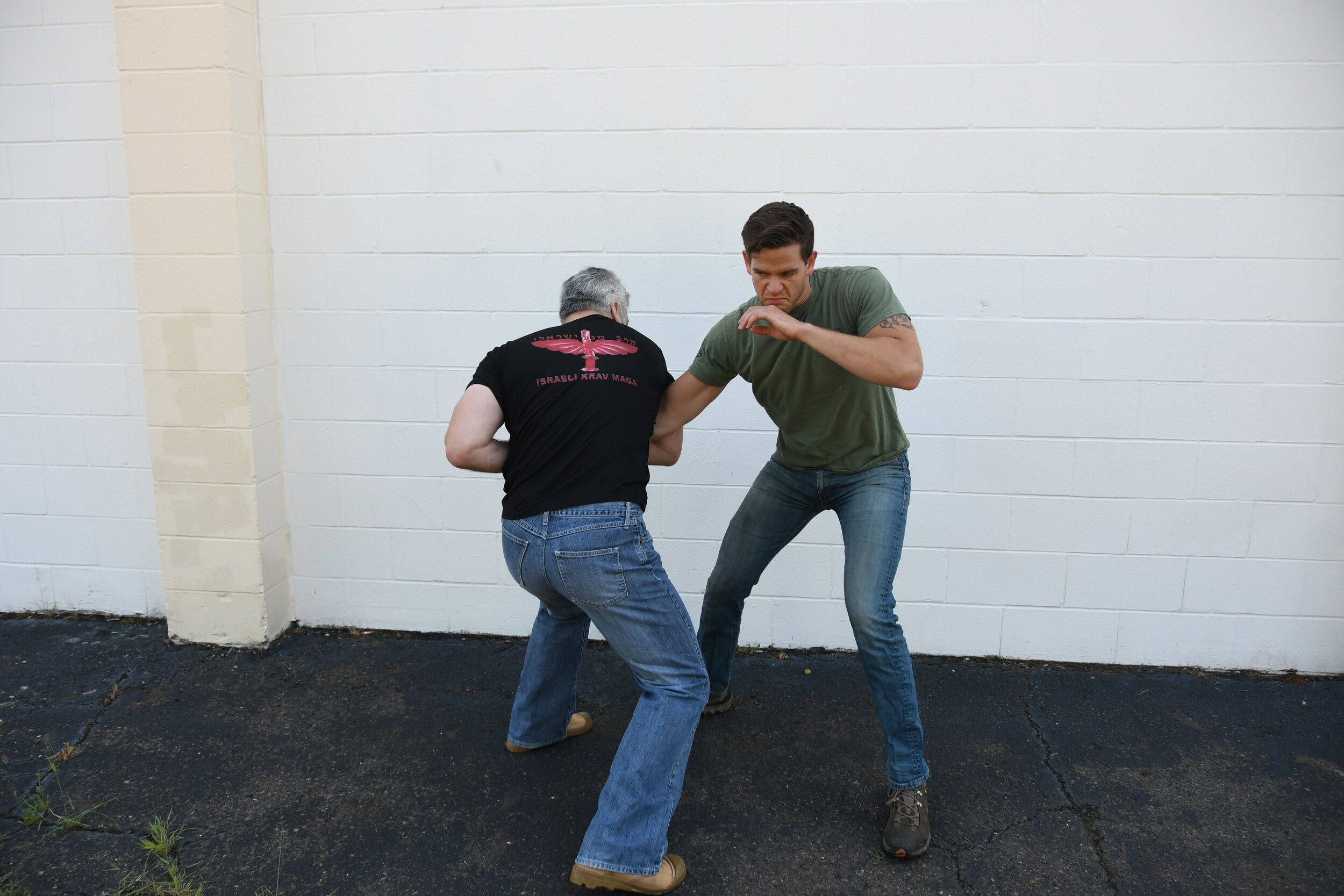
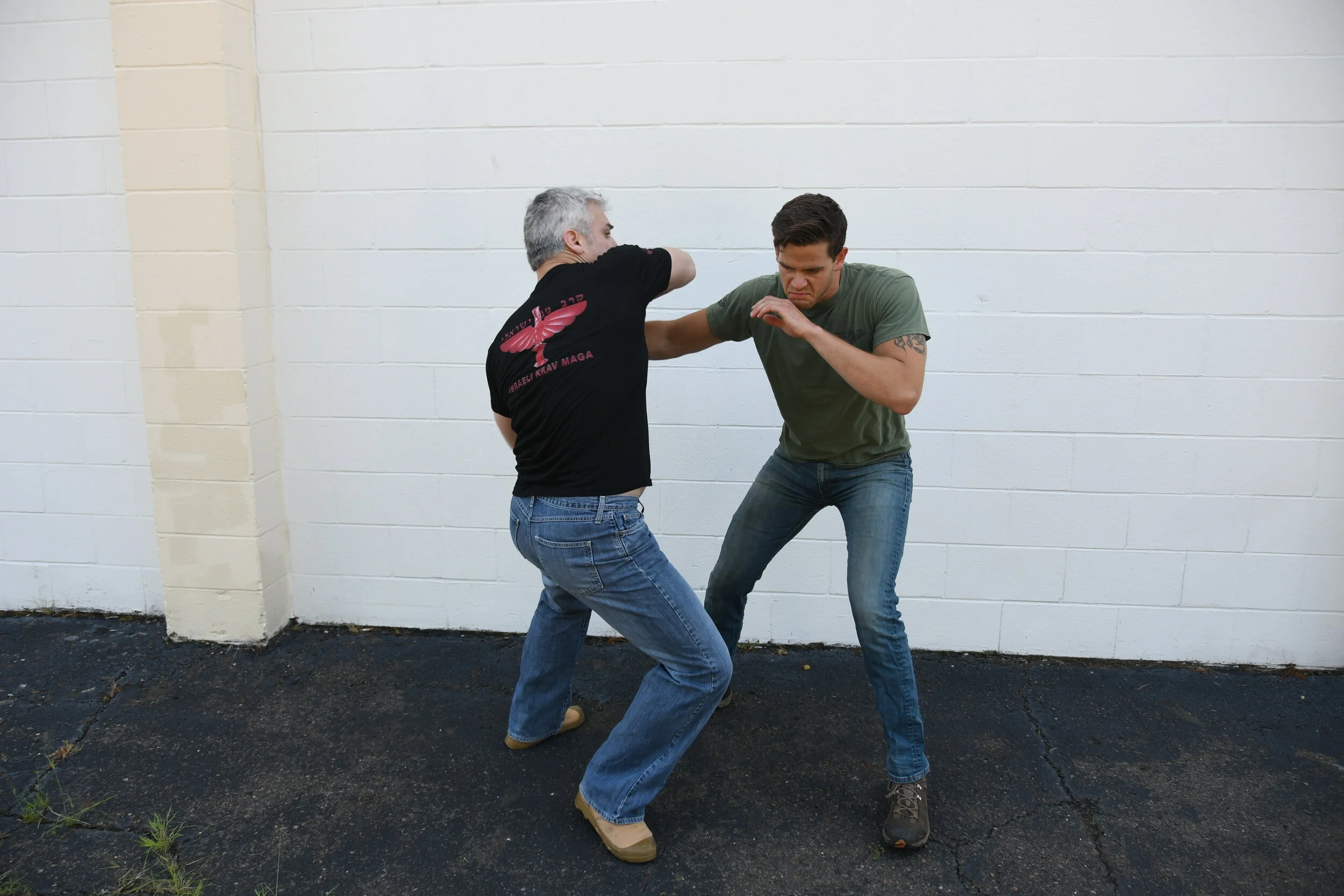
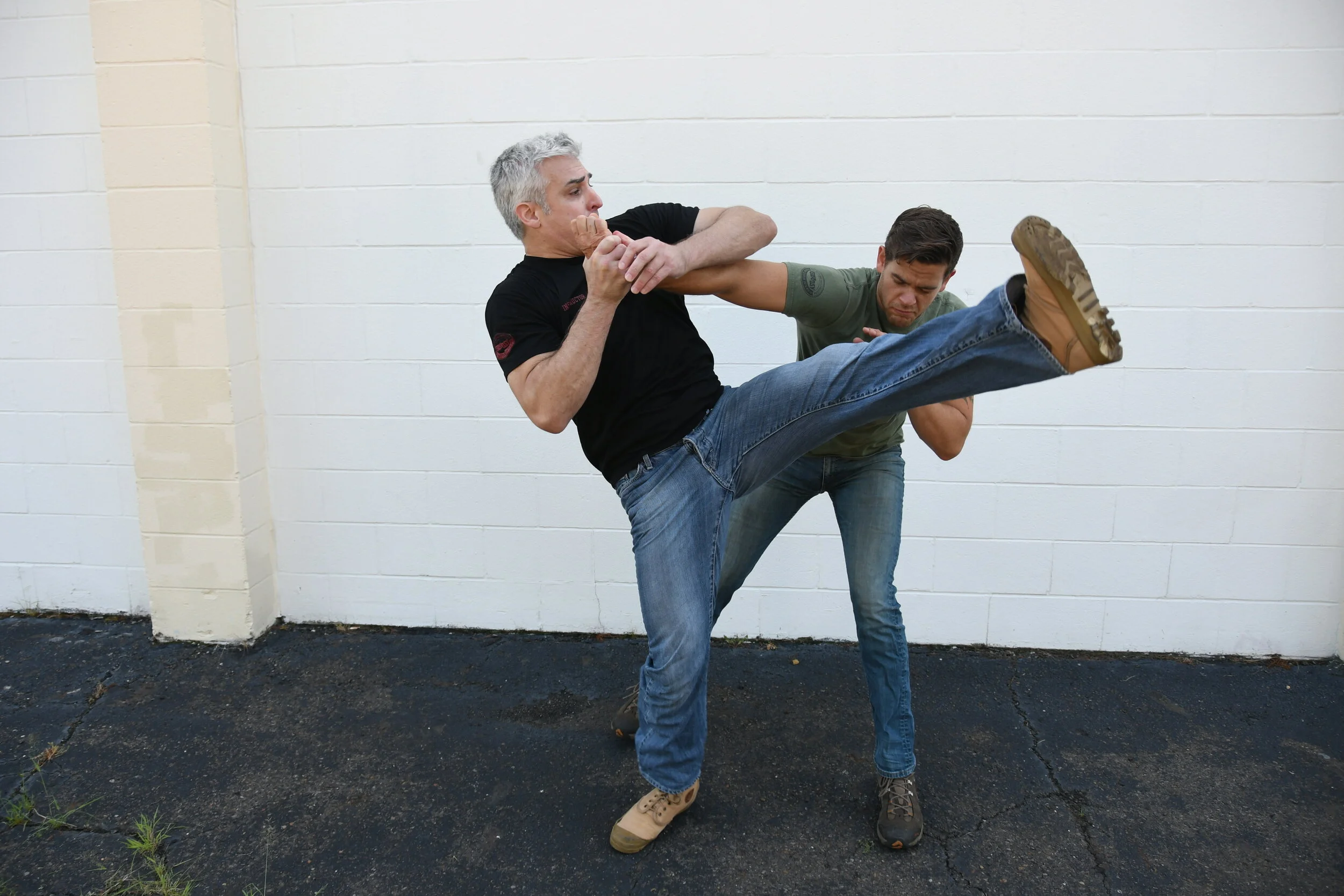

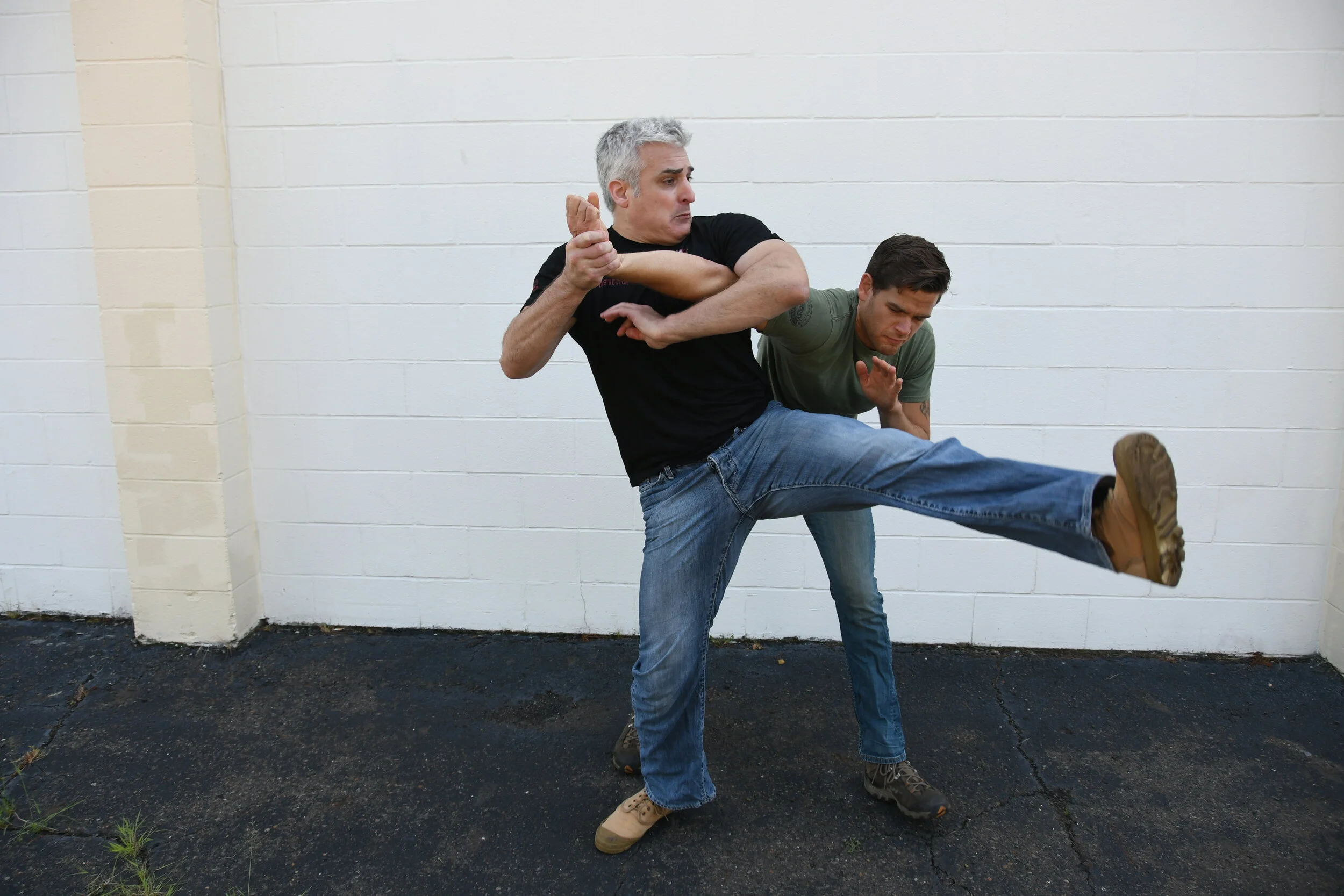
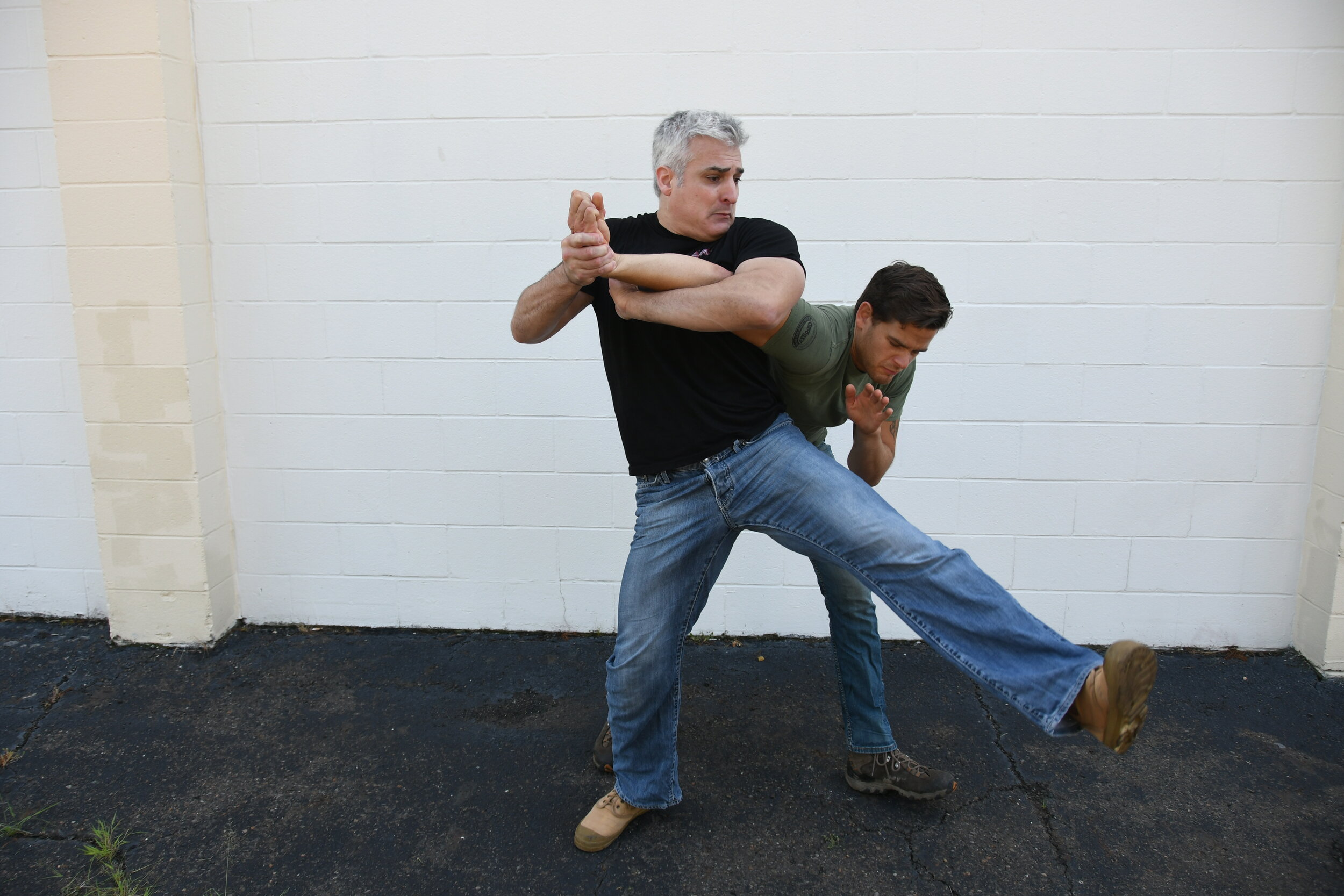
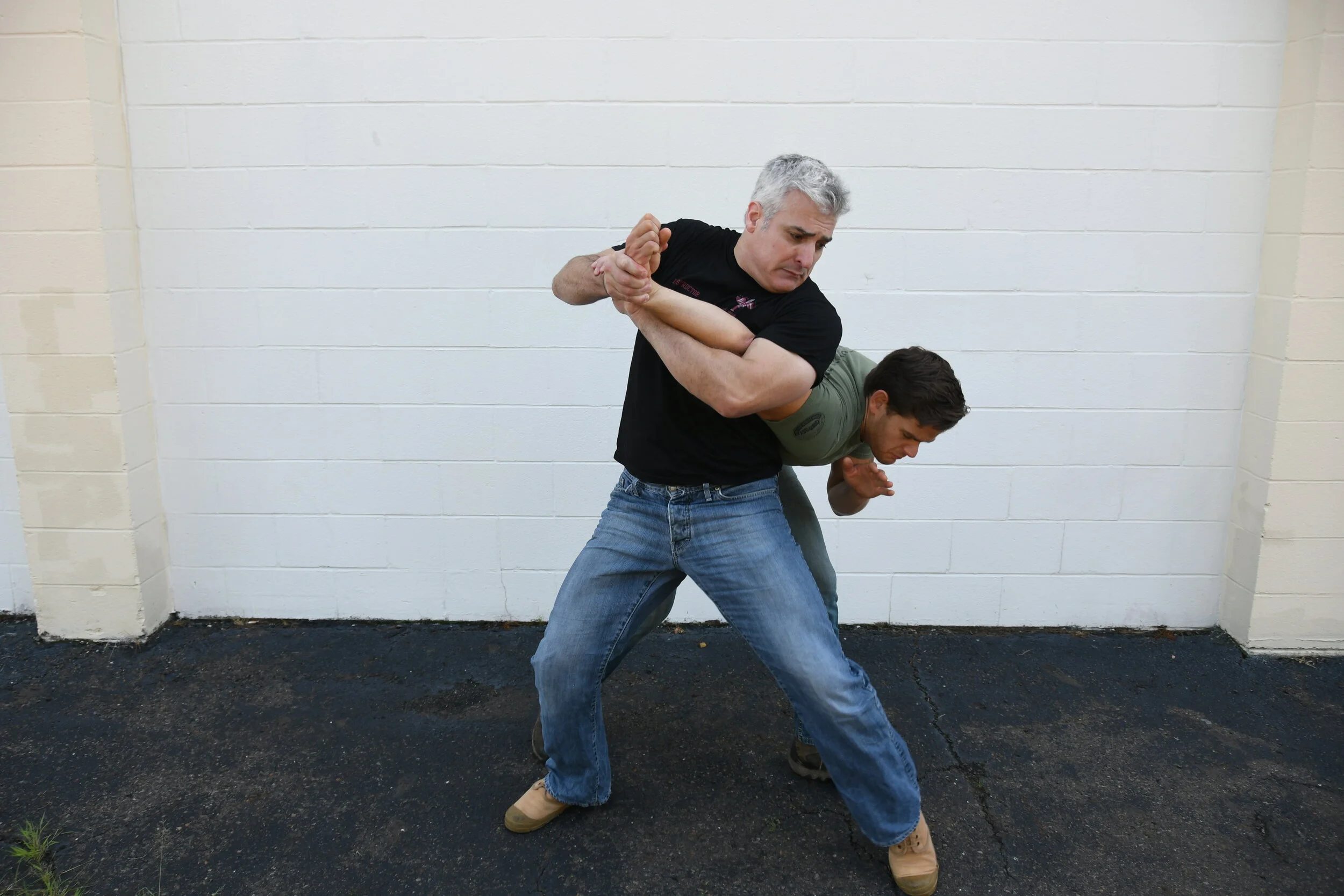
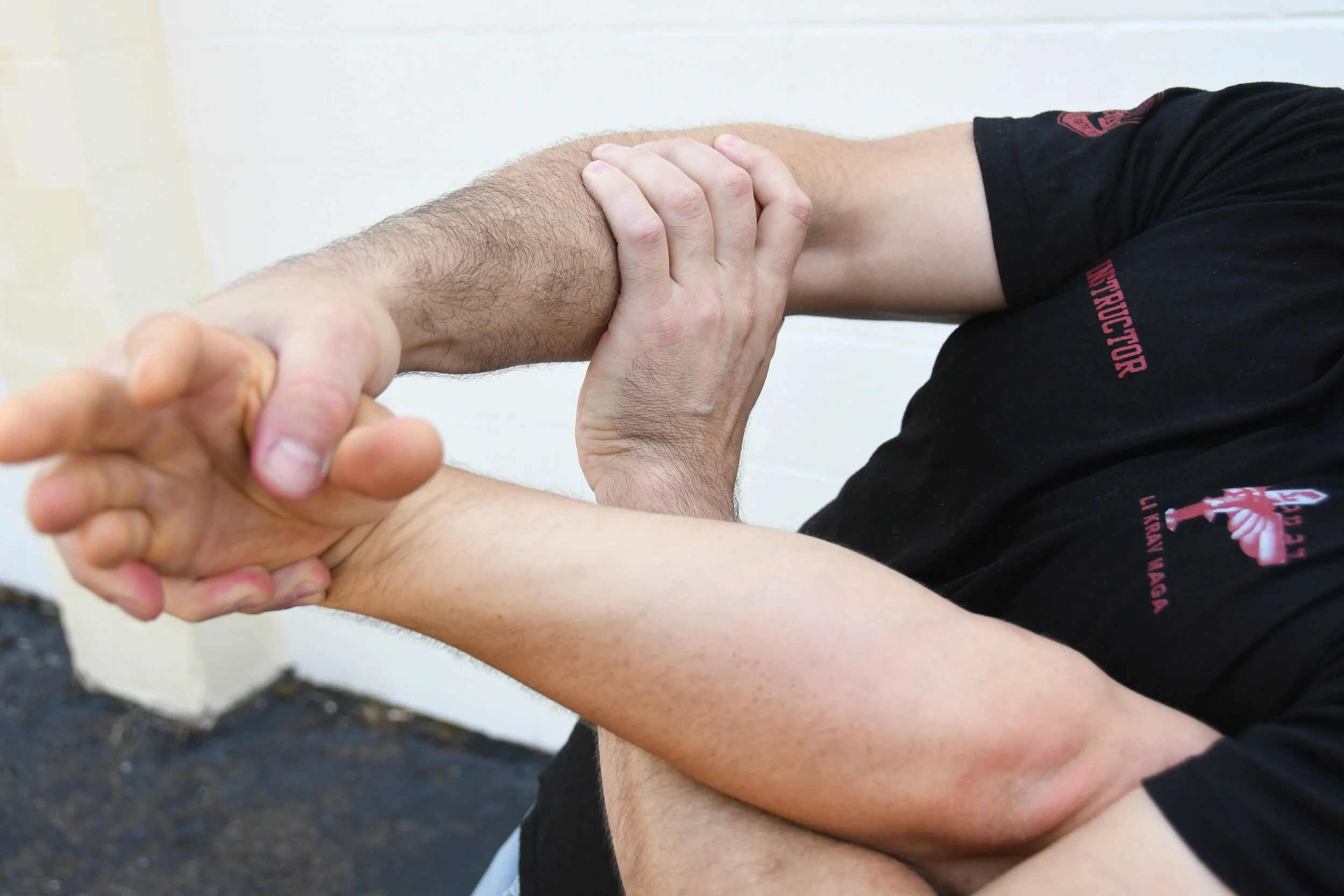
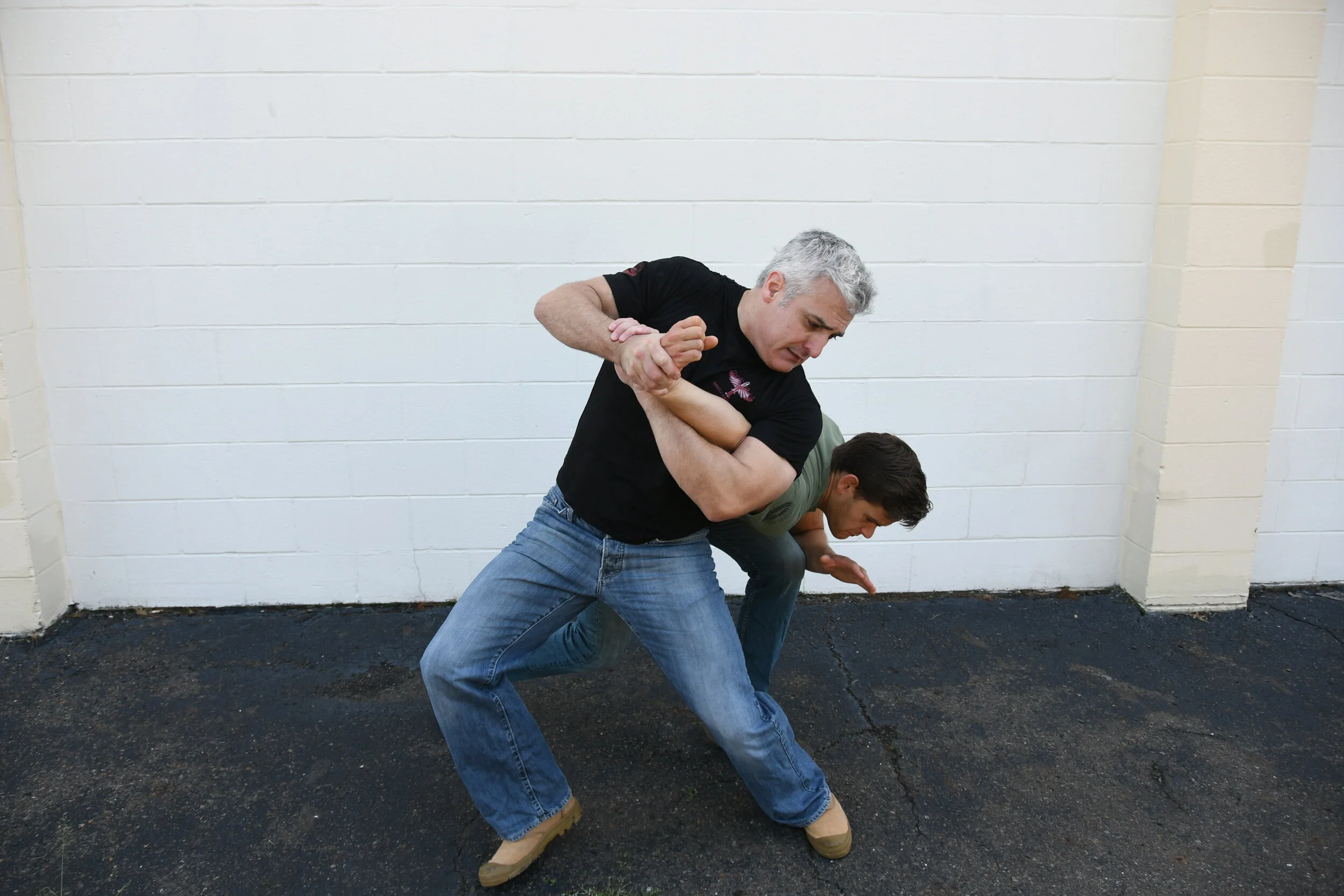

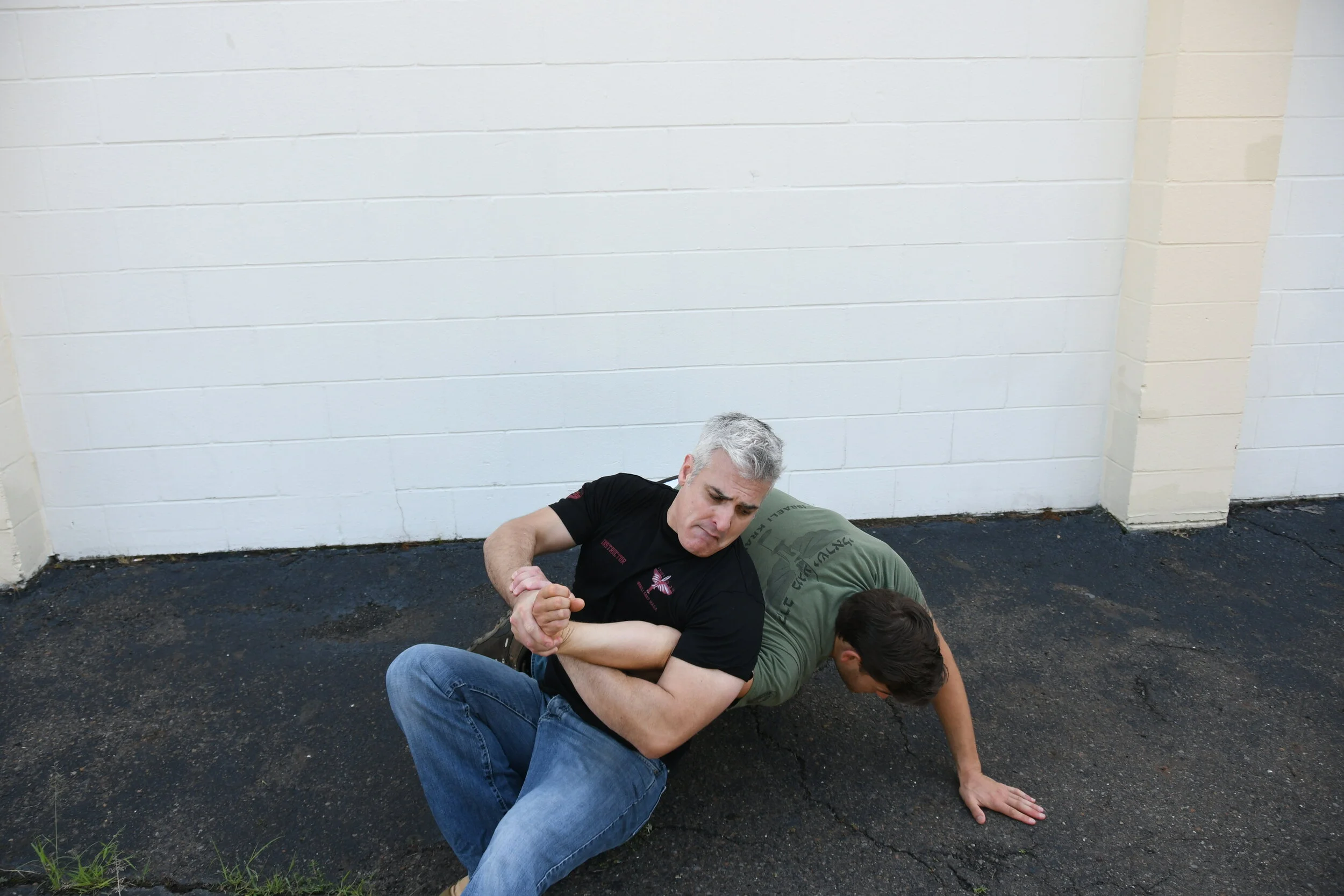
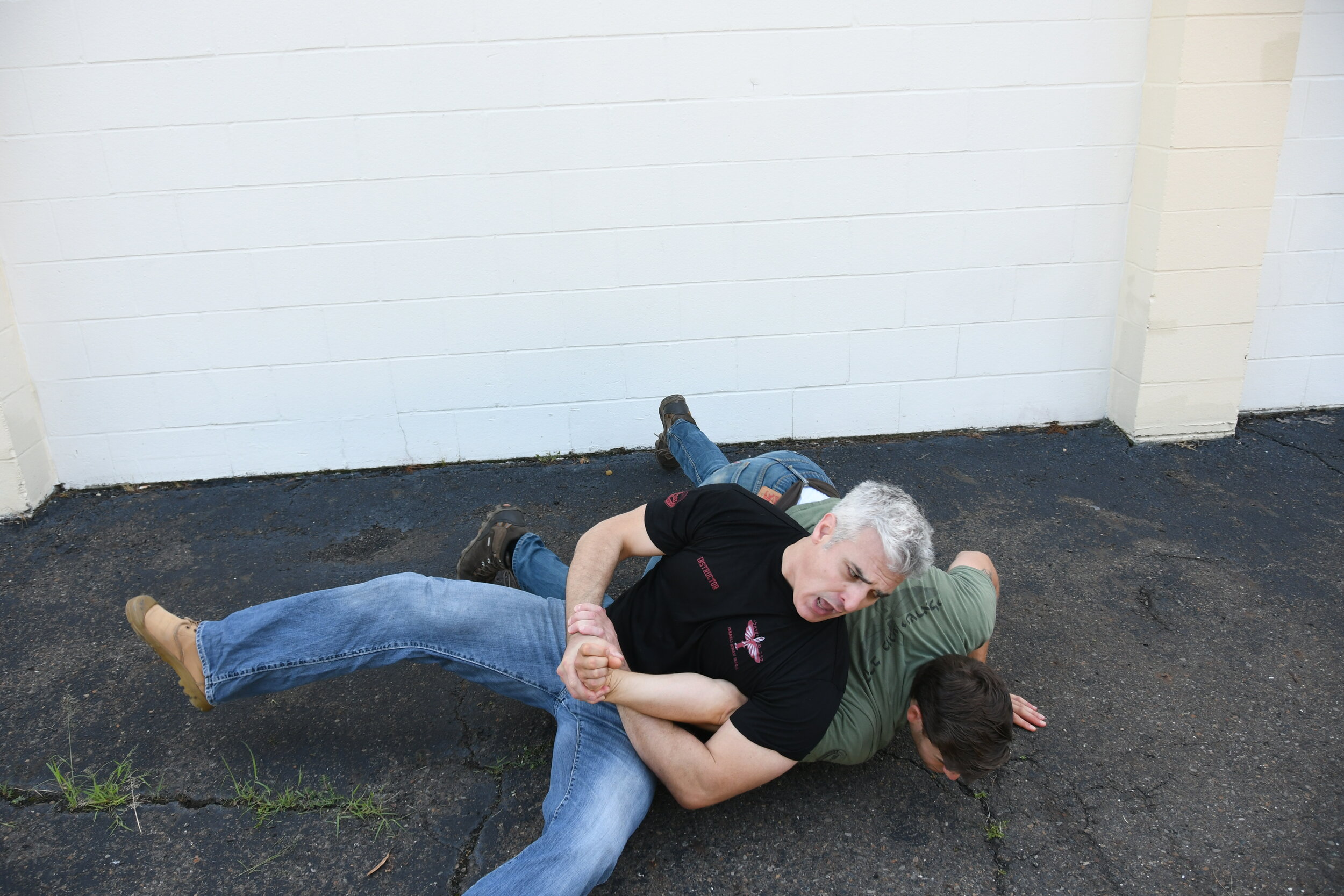
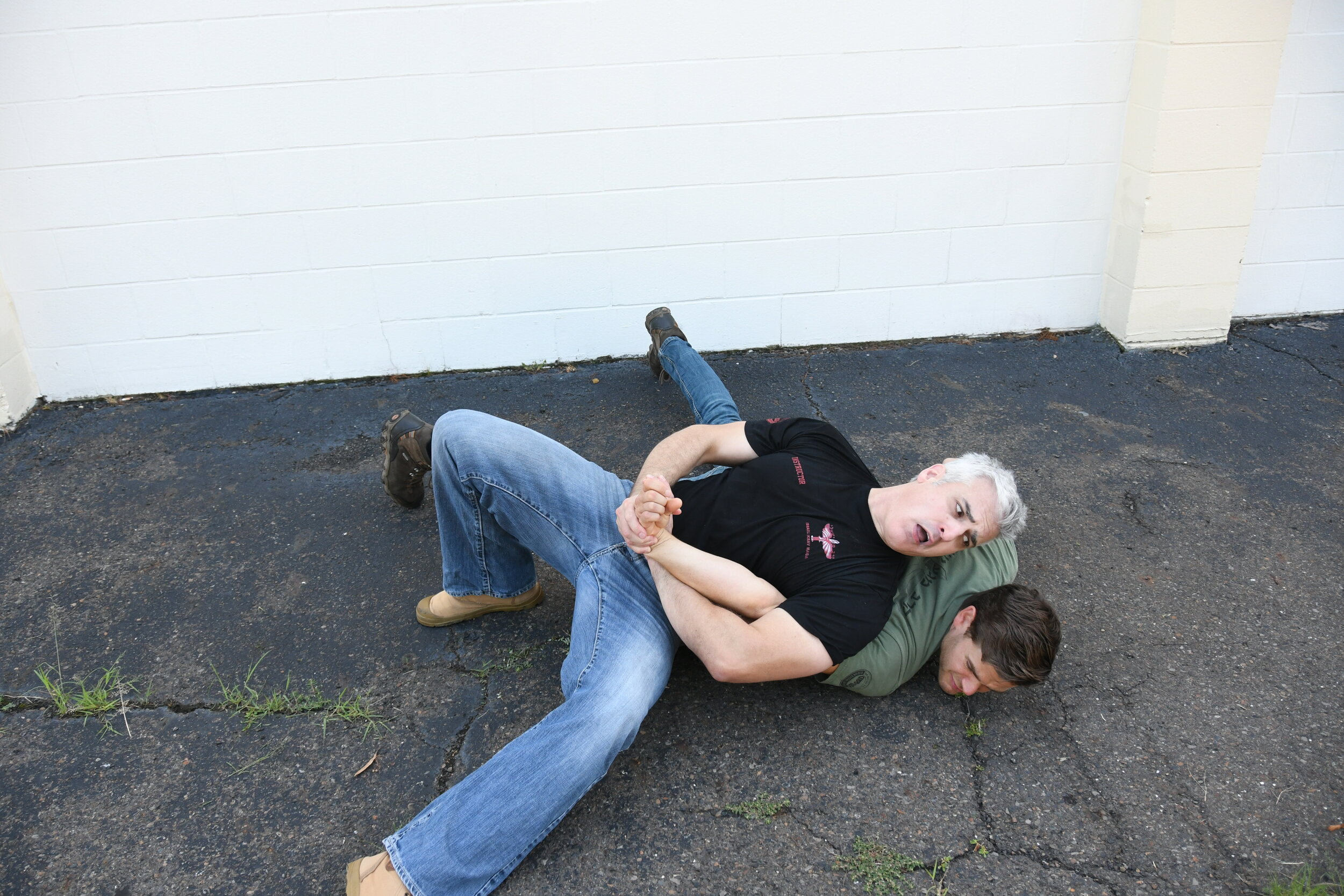
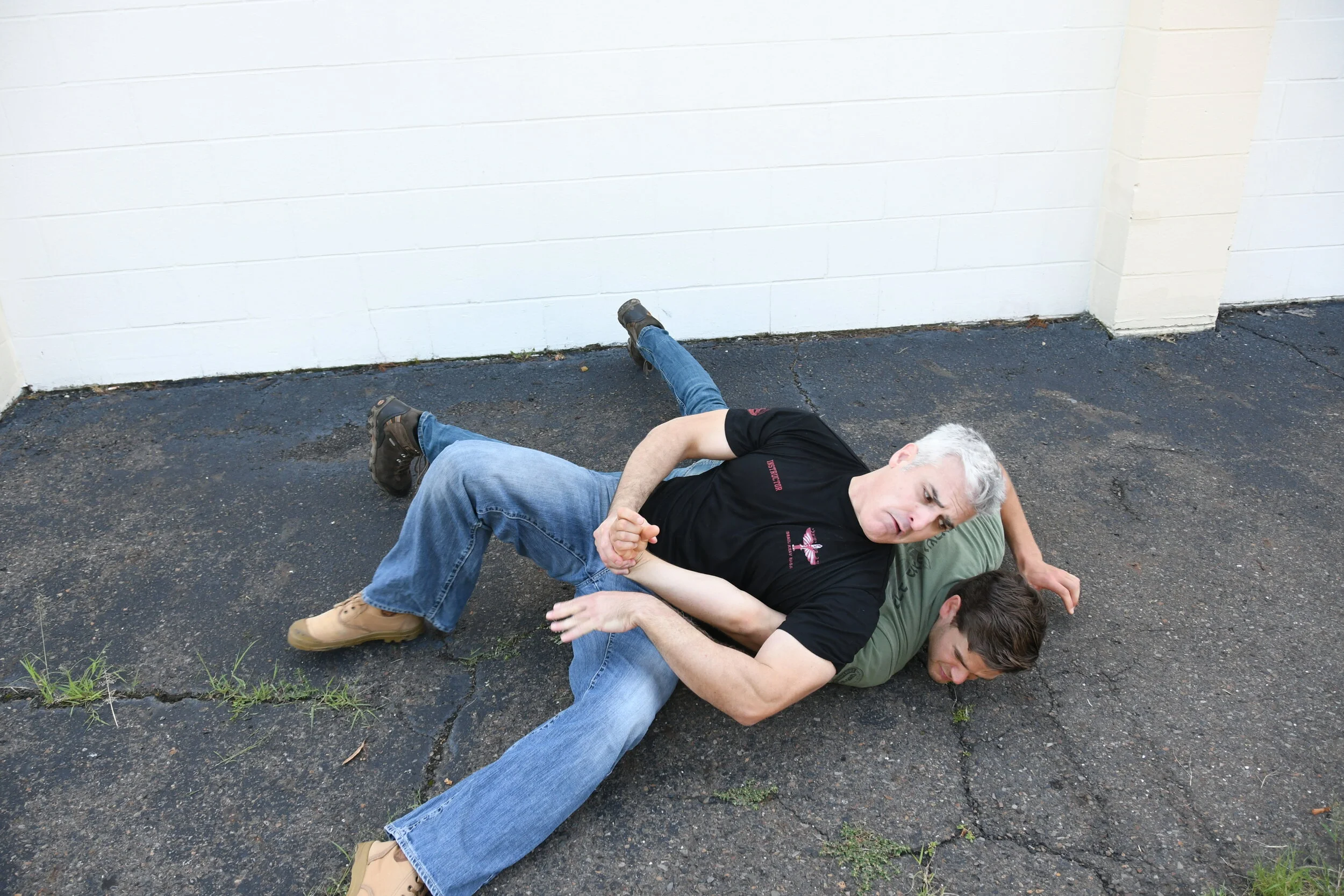
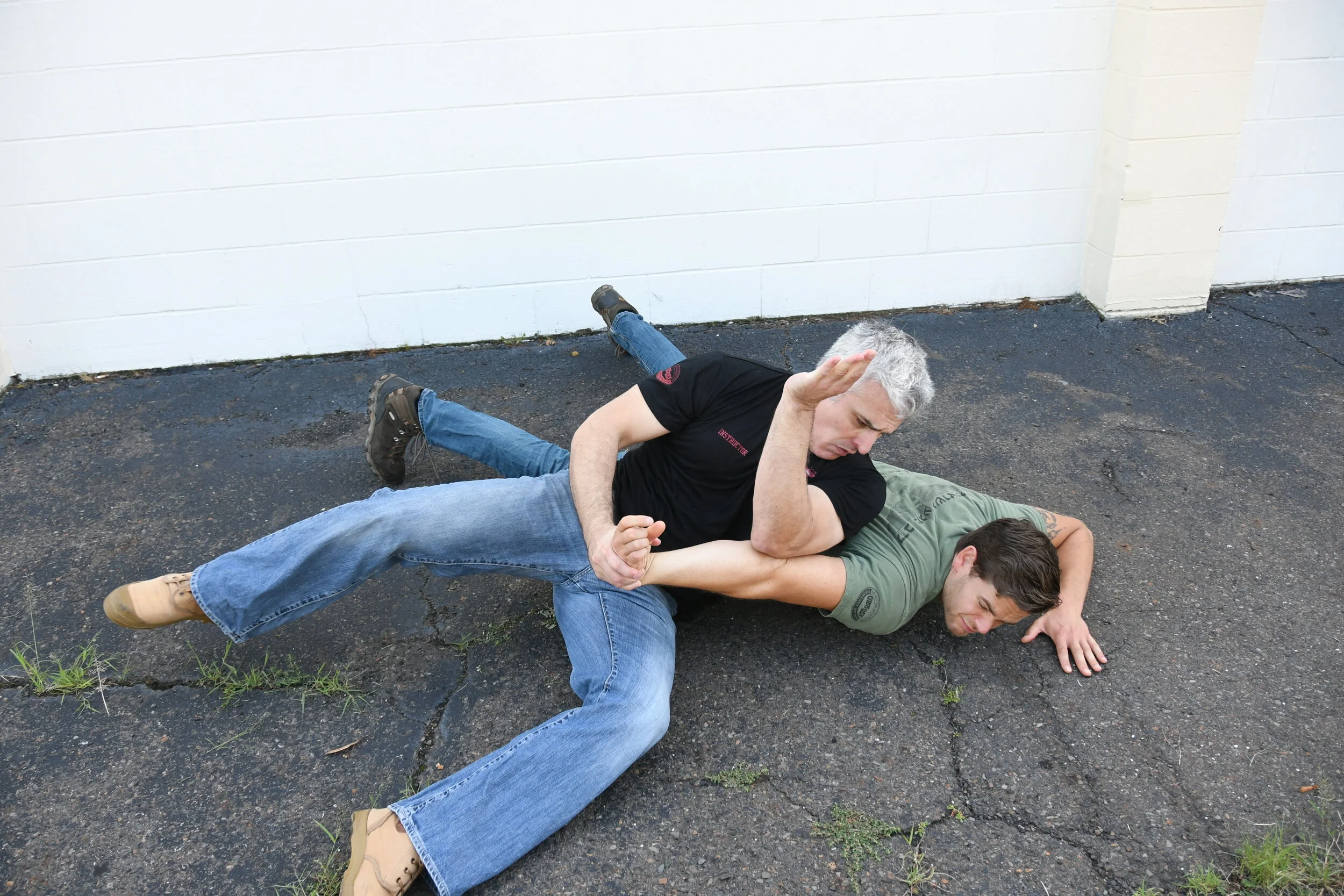

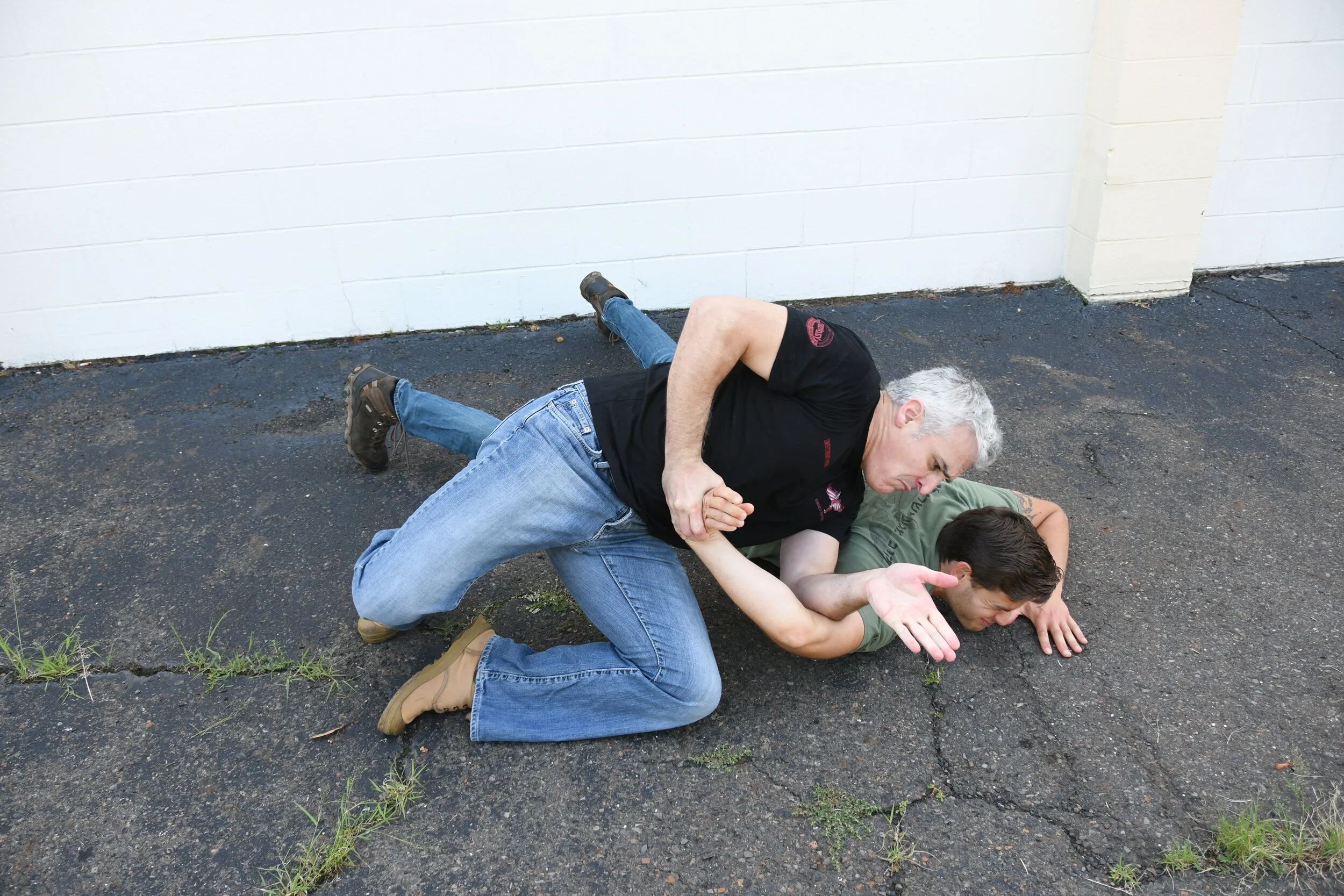
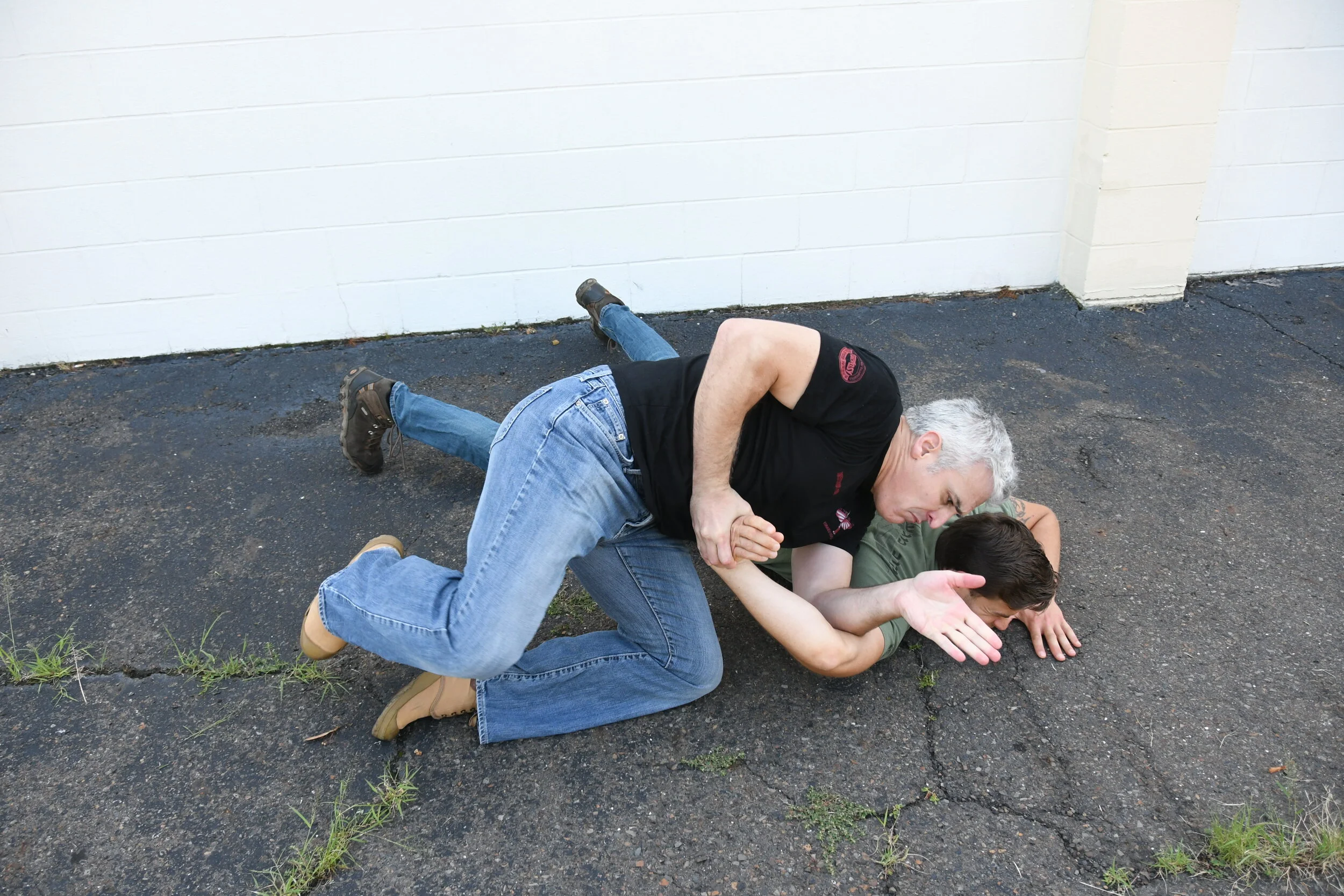
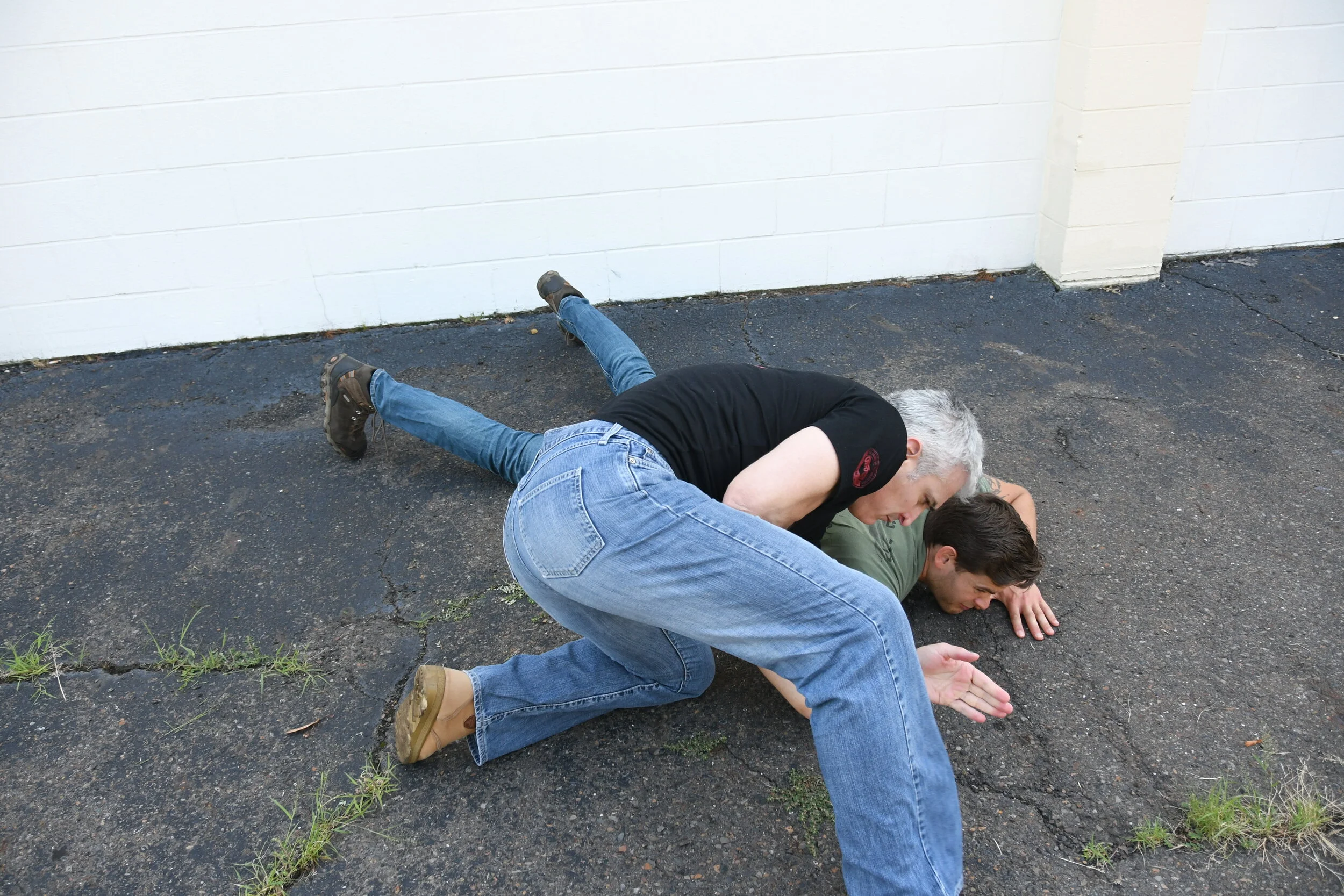
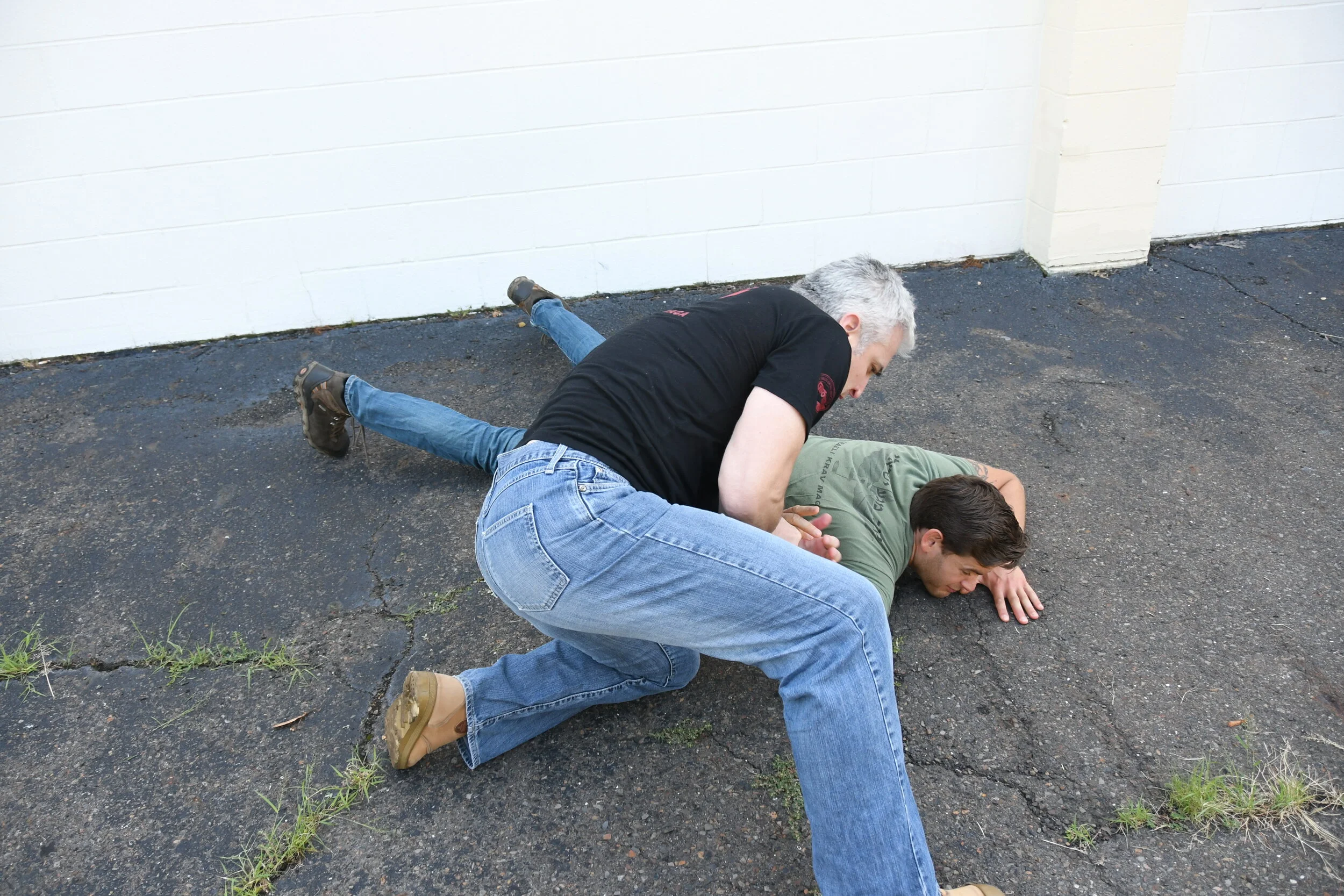
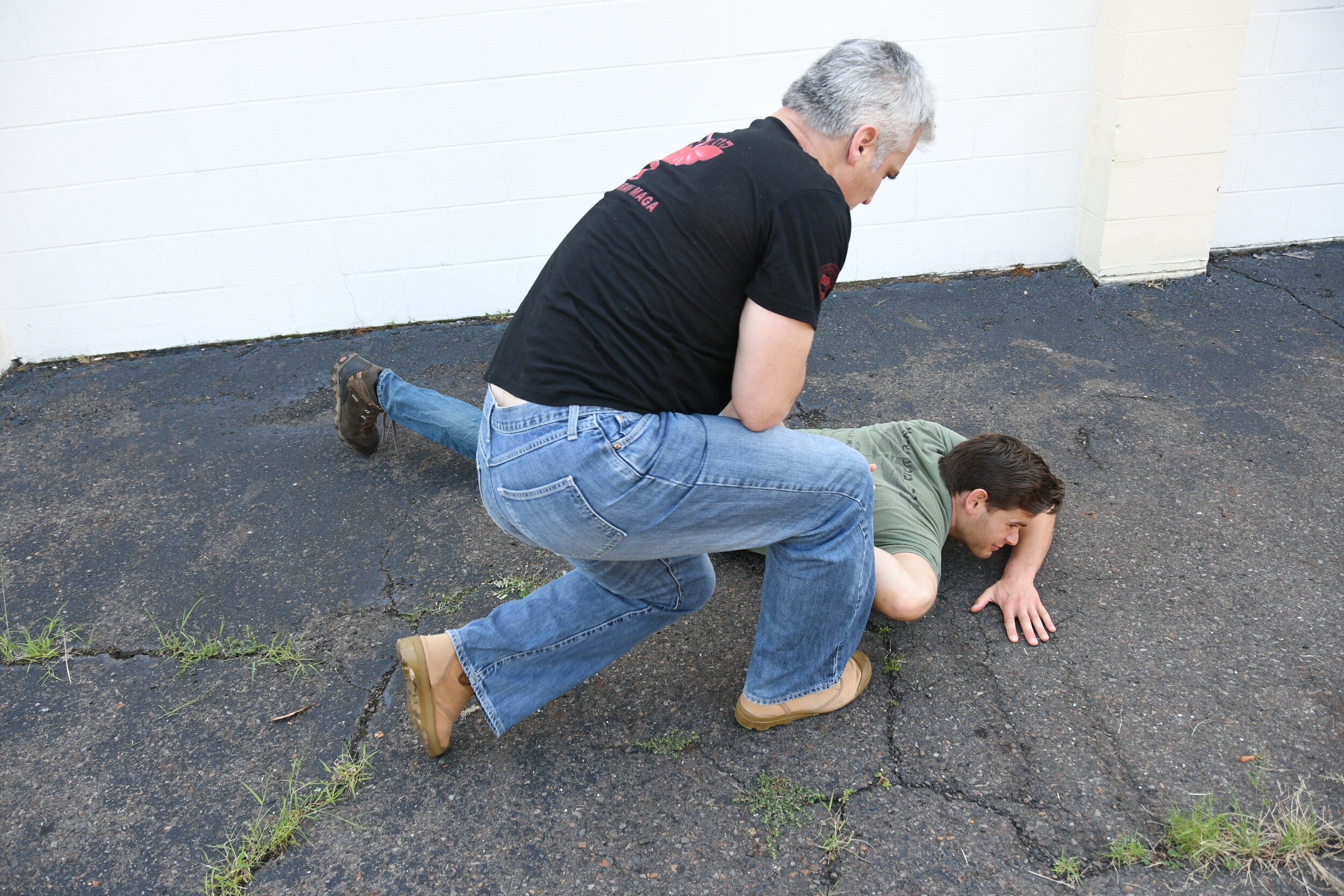
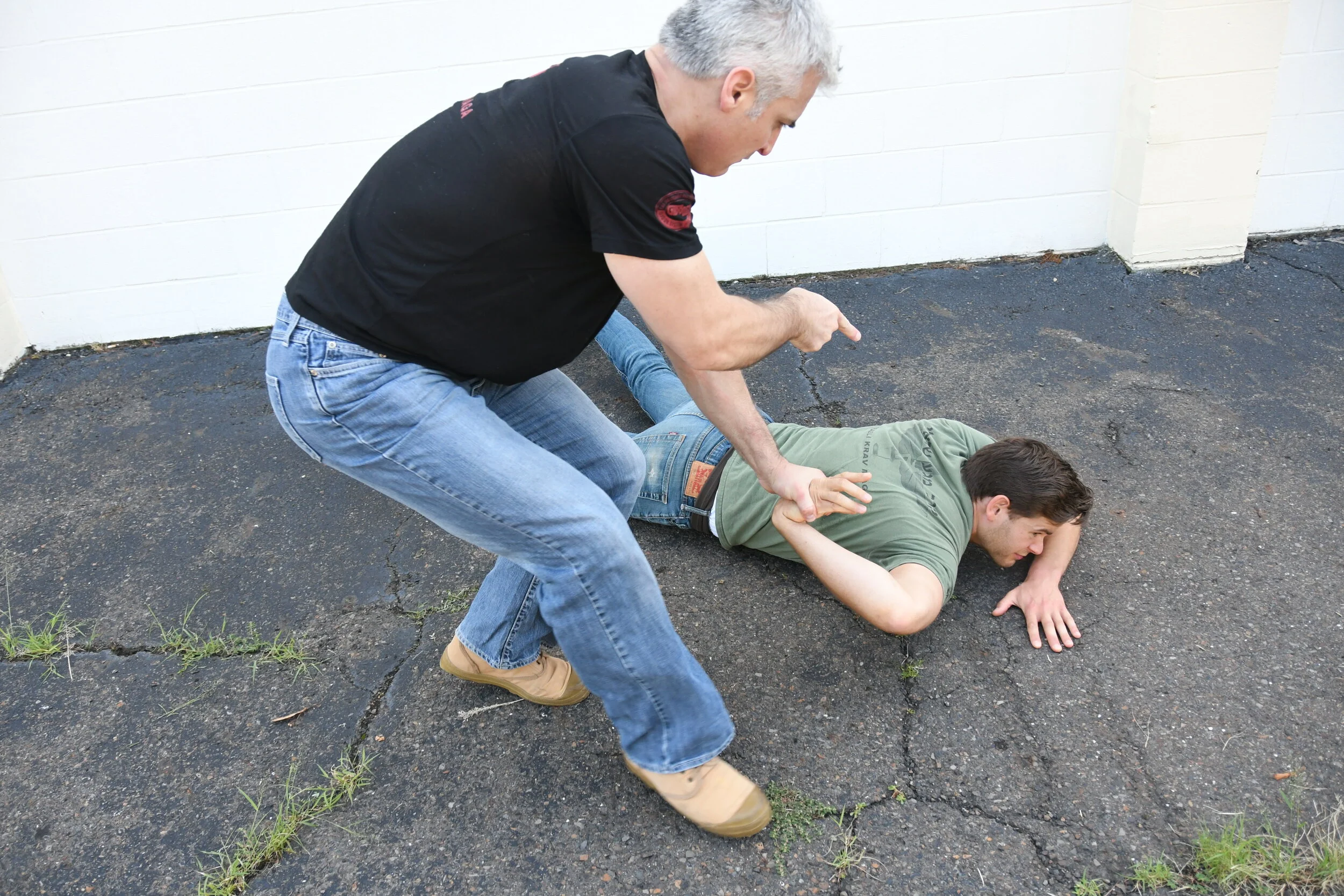
Krav Maga is well-known for its brutal striking combatives and overall injurious approach in disabling an assailant. Outside of law enforcement circles, however, Krav Maga’s highly effective control and restraint holds are not well-known. These joint locks clamp down on an adversary to control his movement. Imi Lichtenfeld built a number of joint-lock control holds into his curriculum while being acutely aware of both moral and legal self-defense use-of-force considerations relating to tactics specifically designed to create injury. By design, these could be applied without injuring an aggressor, though, of course, they could be extended and applied more forcibly to create injury. Imi’s goal was to provide a less aggressive response if the person who grabbed your shirt was incapacitated or was someone familiar to you or simply someone you do not wish to injure. Realistically, these control tactics may not be optimum for a smaller defender against a larger stronger attacker; however, if executed properly, the tactics will work.
In the public’s imagination, arm, wrist, shoulder, and leg locks have become highly popular self-defense tools. Tying an aggressor up in some form of human knot certainly captures many people’s fantasy. Notably, a significant number of civilian- and criminal-case juries alike are disposed to think a bad actor or aggressive person can easily be subdued using a joint pressure lock or some sort of magical pressure point to (en)force good or compliant behavior. Such joint locks are, to be sure, a proven way of taking control of a violent encounter by using a form of counter-violence that is designed not to injure the opponent, but rather to cause him to submit. However, if the aggressor does not obey or submit to commands, the locks can also be used to injure him by hyperextending or misaligning a targeted joint.
As with all self-defense combatives there is a legal side, should you apply a joint lock on someone. Not only do you risk civil and criminal charges of battery, you might also face the risk of being convicted of false imprisonment. For instance, a false imprisonment statute is readily found in New Jersey 2C:13-3 (I am using New Jersey statues as an example, since our civilian training centers are located there). According to the NJ statute concerning false imprisonment:
A person commits a disorderly persons offense if he knowingly restrains another unlawfully so as to interfere substantially with his liberty.
In New Jersey, under this statute, if you are convicted of false imprisonment, you could face up to six months in jail and a fine of up to $1,000. Such a conviction saddles you with a criminal record. Of course, mitigating factors can lessen the charges. The length of time you detained the person, the nature and extent of the restraint you applied, along with your overall intention when you did the retraining, could possibly influence whether you face a conviction or not. DAVID: I must admit, I have never seen the word ‘dispositively’ before. I think ‘possibly’ would be just fine for most people.
Notwithstanding these tort-liability exposures, in the event an aggressor were to grab your shirt to assert social dominance, we present in the photos three examples of control holds that could be used. You can, of course, immediately counter-attack with strikes, but the curriculum provides for another option: an armlock placing the aggressor on the ground. When instructing and envisioning how such a scenario might occur, Imi suggested that this type of multiple joint lock might be applied to a hostile drunkard, an elderly adversary, a mentally disabled person, or a family member who needs to be calmed down and controlled after grabbing your shirt, as in these photos examples.
The shirt grab defense using a standing armbar release creates tremendous pressure on the assailant’s forearm, wrist, and shoulder. Breaking pressure can be applied if the defender steps through with his front leg to sit out or to fall to the ground, landing with his weight on the aggressor’s back. You’ll notice that in executing the lock the defender turns his body away from the assailant to clamp down on the assailant’s offending arm. This is done in such a way that should the assailant then decide to attack the defender, the defender can intercept any type of incoming strike or immediately counter-attack using a straight kick.
Keep in mind that you can apply this lock in a standing position and do not have to go to the ground. Remember also that, if you feel compelled to grapple on the ground, while on the ground you are highly vulnerable to third parties attacking you, especially with stomps. As will be explained further [in section XX, below], Krav Maga makes every effort not to go to the ground. Imi’s system is rooted in this strategy, because he was often outnumbered, and purposefully going to the ground, despite his champion wrestling background, could lead to serious injury at the feet and hands of his anti-Semitic adversaries. Nevertheless, if you feel you must drop to the ground to maximally effect the hold by using your body weight on top of your attacker, as with a standing lock, what else would you do with him?
For either a standing or ground-based lock, your attacker might realize that you are highly trained and mean business and continued aggression would just get him injured, and so he might adopt a position of contrition and comply. Alternatively, you might have embarrassed him and he might get up spoiling for a fight or even draw a weapon to threaten or attack you. Therefore, should you orchestrate this type of control hold, you had better have a game plan to reason any further aggression out of him.
The self-defense world teaches many formidable joint control locks and takedowns, but often little thought is given about what you do once you have an attacker on the ground, other than summoning law enforcement—which is nearly always the best choice. It must be underscored that anyone who has had to control or restrain a determined resisting subject (“controlee”) understands the difficulty of applying minimum objectively reasonable use-of-force controls. What are you going to say to him to calm the situation down? What reasoning from a position of dominance can you offer to forestall any further violence? Perhaps you might authoritatively declare, “Hey man, I don’t want to injure you. I’m going to get up now. It’s over.” Alternatively, you can assert, “You grabbed me. If you want, we’ll just wait it out until the cops show up. I have witnesses that you attacked me and I acted in self-defense. Another choice is that I can get up now and walk away if you agree walk away and it’s over.” Of course, common sense dictates that you do not turn your back on this aggressor, as he may feign compliance and then attack you.
Obviously, you may not always be able to attack the attacker or preempt his aggression. If you are caught unaware or recognize the incoming attack late, you will need to capitalize on the advantageous small window of opportunity that defending any attack affords. This counter-attack window is dependent on your recognition and timing as presented by the attacker as he commits to his attack. By closing the distance or extending a limb, he presents a vulnerable anatomical target for you to damage immediately. Alternatively, by redirecting the attack, you will fleetingly expose a vulnerable anatomical target. In short, what makes Grandmaster Gidon’s Krav Maga different and superior is that retzev crucially minimizes (and with the best practitioners nearly eliminates) any vulnerabilities the kravist presents as targets to be counter-attacked.
In conclusion, not only does a practical threat-analysis method enable you to avoid danger and violence, it helps you develop a legal and liability shield against arrest and prosecution, should you need to use counter-force. If you must resort to violence to protect yourself, you must be able to explain to a jury why and how you chose your actions and that there were no reasonable alternatives. This is counterbalanced against the understanding that any given physical confrontation has the potential to kill you. Even if you prevail in criminal court, you are likely to face civil proceedings. Financial penalties might include compensating the injured party for lost earnings, medical bills, pain, and suffering along with the prospective of a jury awarding punitive damages to teach you a lesson. Keep in mind that the burden of proof to prove civil liability is less restrictive than a prosecutor’s burden of proof. Therefore, the plaintiff (your adversary) simply needs to prove simply that is more likely than not that your actions caused physical injuries, mental anguish, and other losses.